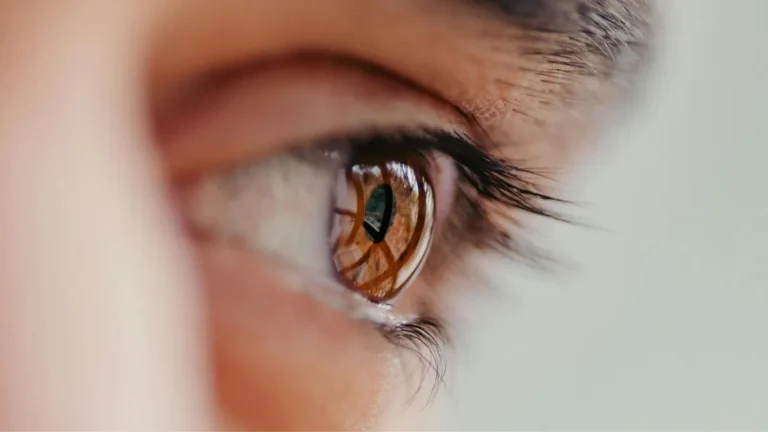Why Asthma Can Cause Pain Behind Ribs and What to Do About It
Can asthma cause pain behind ribs? You wouldn’t believe how often I get asked this. As a pulmonary nurse practitioner, I’ve seen all kinds of symptoms walk through my clinic doors—some expected, some not-so-much. But rib pain in asthma? Yep, it’s a real thing, and it throws a lot of people off. I totally get it—when you think asthma, you think wheezing or shortness of breath, not sharp or dull aches in your sides. But let’s unpack this together, because understanding *why* it happens can help ease both your mind and your ribs.
What Exactly Is That Rib Pain During an Asthma Flare?

When someone tells me, “It feels like there’s a band of pain right under my ribs when I breathe,” I immediately ask about their asthma history. See, asthma isn’t just about inflamed airways—it’s a whole-body experience sometimes. That rib pain? It can stem from overworked respiratory muscles. Your body works harder to pull in air, especially during a flare-up, and guess what? Those muscles between and around your ribs—called the intercostals—are working overtime.
When those muscles are constantly contracting and straining, they get sore, just like any other muscle would after a workout. Except this isn’t a workout you signed up for, and it can feel like something way more serious, like a heart issue or even a cracked rib. But often, it’s just your poor muscles saying, “Hey, we’re exhausted!”
Asthma Coughing Fits: A Sneaky Culprit Behind Rib Discomfort
Let me tell you, chronic coughing can mess you up more than you think. I’ve had patients who developed costochondritis—inflammation of the cartilage where your ribs meet your breastbone—just from frequent, hard coughing during asthma attacks. It mimics chest pain and can feel downright scary. You might even mistake it for something heart-related (which you should always rule out, of course).
In these cases, the rib pain isn’t from the lungs themselves but from the trauma your ribcage endures from repetitive coughing. It’s not dangerous in most cases, but it’s annoying, painful, and often overlooked. I usually recommend rest, a heating pad, and some gentle stretching—plus, of course, better asthma control to prevent the cycle from continuing.
Can Asthma Cause Pain Behind Ribs on Just One Side?

Absolutely, and this one freaks people out. You wake up and there’s a gnawing ache on your right side or a stabbing pain on your left, and immediately your brain jumps to something dire. But one-sided rib pain in asthma isn’t unusual. Often, it’s positional—maybe you slept weird, or maybe the inflammation in your lungs is uneven.
Other times, it’s due to what I call “compensatory breathing.” When one lung is more affected than the other, your body naturally shifts the effort to the “stronger” side. Over time, that leads to muscle fatigue, and yep—pain behind the ribs. I’ve had patients come in thinking they pulled a muscle at the gym, only to realize it was their asthma acting up in sneaky ways.
How to Tell If Rib Pain Is Asthma or Something Else
This is the big question. Because let’s be honest—rib pain could also mean a whole host of other things. So here’s what I usually walk patients through:
- Does the pain worsen when you breathe in deeply or cough? That points toward muscle strain or costochondritis.
- Is it paired with shortness of breath, wheezing, or tightness? That’s classic asthma territory.
- Is it sudden, sharp, and radiating? That could be something else entirely—like a pulmonary embolism or cardiac issue. Get that checked ASAP.
If you’re not sure (and honestly, even if you *think* you are), get it evaluated. As someone who’s spent years in pulmonary care, I can’t emphasize this enough: never ignore new or worsening symptoms. Rib pain might not be a typical asthma symptom, but it’s definitely something I see regularly—and it’s not something to brush off.
Common Triggers That Lead to Rib Pain in Asthma Patients

One thing I like to emphasize with my patients: managing triggers isn’t just about avoiding flares—it’s also about preventing the weird side effects, like that rib pain we’ve been talking about. Here are some common asthma triggers I’ve seen make rib discomfort worse:
- Cold air – It tightens up your airways and makes breathing more labored.
- Exercise – Especially if you’re not warming up first. Sudden exertion = sudden rib strain.
- Allergens – Dust, pollen, pet dander… they all lead to coughing fits.
- Viral infections – A cold or flu makes your lungs work harder, and those muscles get sore fast.
I’ve had patients who came in with “mystery pain” that turned out to be nothing more than a poorly controlled allergy season. Once we got their asthma meds adjusted and added a good HEPA filter at home, the rib pain subsided too. Magic? Nope—just solid asthma management.
Why Breathing Mechanics Matter More Than You Think

This might sound a little nerdy, but hear me out—the way we breathe, especially when asthma is involved, can make a huge difference in how our ribs feel. A lot of my patients don’t realize that breathing is a full-body process. It’s not just your lungs doing the work; your diaphragm, intercostal muscles, accessory neck muscles—they’re all part of the action.
When asthma flares up, we often end up using the wrong muscles to compensate. Instead of deep diaphragmatic breathing (the good kind), we do shallow chest breathing. That means your rib cage is constantly expanding and contracting in a way it’s not meant to long-term. This puts strain on those rib-supporting muscles, and boom—there’s that nagging pain behind the ribs.
One thing I’ve started doing with my patients (and myself!) is incorporating simple breathing exercises and posture corrections. Even sitting upright while working or sleeping with a slightly elevated upper body can reduce rib tension dramatically. It’s wild how the smallest changes add up.
Signs You’re Breathing Incorrectly During Asthma Episodes
Here’s a quick checklist I often go over in clinic to help patients figure out if their breathing mechanics might be contributing to rib pain:
- You find yourself lifting your shoulders when breathing.
- Your belly barely moves when you inhale.
- You feel tightness around your neck or upper back after a flare.
- Rib or chest pain worsens after lying flat for a while.
If any of these sound familiar, your breathing technique may need a tune-up. It’s something most people don’t think about, but once you start breathing with intention, everything—from energy levels to pain levels—can shift for the better.
What I Tell My Patients About Managing Rib Pain with Asthma

Now, let’s talk real-life stuff. When a patient walks into my office and says, “Bianca, my ribs feel like I did 100 crunches in my sleep,” I know we need a plan that goes beyond inhalers. Here’s what I usually suggest—not as a one-size-fits-all, but as a starting point:
- Control the inflammation first. That means sticking to your controller meds like your life depends on it—because sometimes it really does. Rib pain won’t get better if your lungs are still under attack.
- Stretch it out. Gentle yoga or even a few deep stretches targeting the ribs and back can do wonders. I’ve had folks use foam rollers to release that tension and walk out feeling brand new.
- Warmth is your friend. A heating pad or warm compress placed over the rib area for 15-20 minutes can reduce muscle stiffness.
- Watch your posture. Seriously. Hunching over your phone or laptop compresses your chest and forces bad breathing habits.
I’ve even taught some of my patients how to use breathing apps that guide them through paced respiration. It’s a great tool, especially if anxiety is part of the picture—because anxiety and asthma love to tag-team, and guess what? They both contribute to rib discomfort.
Other Conditions That Might Mimic Rib Pain from Asthma

Okay, we’ve talked a lot about how asthma can cause pain behind ribs—but let’s not pretend it’s always asthma. There are a few other issues that can feel almost identical, and I’ve seen patients misdiagnosed (or self-diagnose via Dr. Google) far too many times. Here’s what else could be going on:
- Pleurisy: Inflammation of the lining of the lungs. Often presents as sharp pain when breathing or coughing.
- Musculoskeletal injuries: Maybe you twisted wrong or lifted something heavy. It happens to the best of us.
- GERD (acid reflux): It can cause a burning sensation under the ribs, especially after eating.
- Gallbladder issues: Pain from the right upper quadrant sometimes radiates and gets mistaken for lung problems.
This is why a full history and physical exam matter. When someone comes in with rib pain, we don’t just slap a diagnosis on it—we dig. We ask about diet, sleep, stress levels, even recent travel. You can’t treat what you don’t fully understand.
So, What’s the Bottom Line?
At the end of the day, rib pain with asthma is more common than most people think. It doesn’t always mean something is seriously wrong—but it also shouldn’t be ignored. As a nurse practitioner who’s had one too many deep convos with patients sitting on the edge of an exam table, clutching their sides in confusion, I can tell you: listening to your body is step one.
Get familiar with your symptoms. Know your triggers. Keep a log if you have to. And if something feels different—even if it’s “just” rib pain—check in with your healthcare provider. That’s what we’re here for.
When to Seek Medical Advice About Rib Pain and Asthma

Here’s the truth—not all rib pain linked to asthma is a big deal, but some of it definitely needs attention. I always tell my patients: if you’re ever in doubt, get it checked out. Don’t play guessing games with your health. That dull ache behind the ribs that’s been hanging around for a week? Could be harmless. But sudden, sharp, or radiating pain? We’re not gambling with that.
Here’s when I suggest reaching out to your healthcare provider (or hitting the ER if it’s after-hours):
- Severe or worsening pain that doesn’t improve with rest or medication
- Shortness of breath that’s new or more intense than usual
- Chest tightness combined with dizziness, sweating, or nausea
- Pain that spreads to your back, neck, or shoulder
I once had a patient who waited two days thinking their rib pain was just another asthma flare—it ended up being a small pneumothorax (collapsed lung). Thankfully, it was caught in time, but it could’ve gone much worse. Your body speaks to you. Don’t ignore it.
Don’t Downplay Your Pain
This might sound obvious, but too many people—especially women and people with chronic conditions—tend to brush off symptoms because they don’t want to seem dramatic. I get it. But as someone who’s worked with hundreds of asthma patients over the years, I’m giving you full permission to advocate for yourself.
Asthma may be common, but every person’s experience is different. If something feels off, even if it doesn’t fit the “classic” symptom list, it’s worth mentioning. You know your body better than anyone else.
Preventing Rib Pain From Becoming a Recurring Issue

If you’ve dealt with rib pain caused by asthma before, your goal now is to prevent it from becoming your new normal. There are several strategies I share with my patients that have helped them keep flare-related aches at bay—because let’s be real, nobody has time for chronic pain.
Top Tips for Prevention
- Stick to your asthma action plan. This is your roadmap. Use it. Adjust it as needed with your provider. Keep meds filled and accessible.
- Practice breathing techniques daily. Not just when you’re flaring. I recommend diaphragmatic breathing or pursed-lip breathing—both work wonders over time.
- Strengthen your core and posture. Better support for your lungs = less strain on your ribs. I’ve seen real progress with just 10 minutes of daily stretches and light strength exercises.
- Track your triggers. Use a journal or app to track what sets you off. Whether it’s pollen, stress, or certain foods—it helps to know.
- Hydrate and rest. I can’t emphasize this enough. Muscle fatigue and inflammation both respond well to good hydration and quality sleep.
One of my patients, a young teacher, used to get rib pain every spring like clockwork. Once we identified her trigger (pollen and poor air quality), added a HEPA filter in her classroom, and adjusted her meds slightly, that pain never returned. Sometimes, it really is about those small consistent tweaks.
References
- American Lung Association
- Mayo Clinic
- Centers for Disease Control and Prevention (CDC)
- National Heart, Lung, and Blood Institute
- National Library of Medicine
Disclaimer
This article is based on both professional clinical experience and current respiratory health guidelines, but it’s not a substitute for personal medical advice. Always consult with your healthcare provider before making any changes to your asthma treatment plan or if you experience new or worsening symptoms.
Thanks for sticking with me through this deep dive. If you’ve ever found yourself wondering, “Can asthma cause pain behind ribs?”—now you’ve got the tools, context, and confidence to take charge of it. Trust your body, trust your care team, and never be afraid to ask the questions that matter.

Bianca Nala is a compassionate Nurse Practitioner with a strong background in primary and respiratory care. As a health writer for Healthusias.com, she combines her clinical expertise with a talent for clear, relatable storytelling to help readers better understand their health. Bianca focuses on topics like asthma, COPD, chronic cough, and overall lung health, aiming to simplify complex medical topics without losing accuracy. Whether she’s treating patients or writing articles, Bianca is driven by a single goal: making quality healthcare knowledge accessible to everyone.






